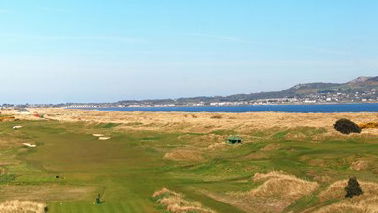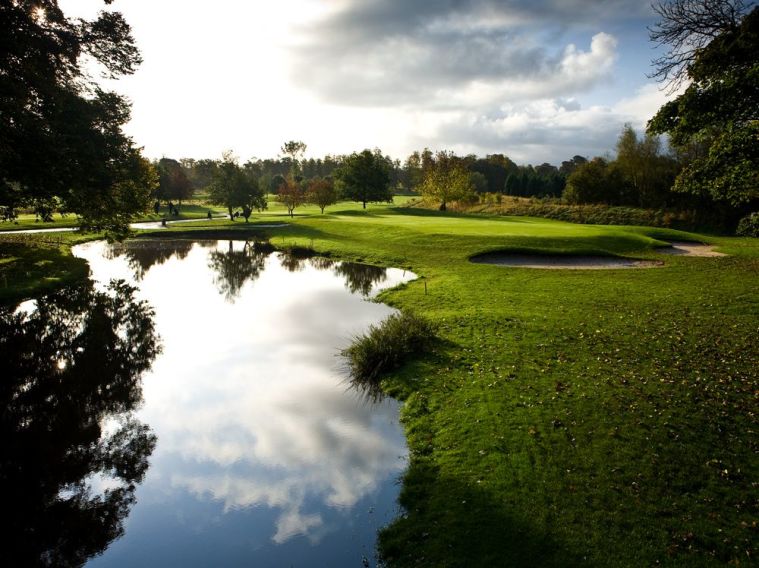Royal Dublin Golf Club: course review
Royal Dublin Golf Club, review: characterful course offers classic links test

Christy O’Connor Sr, Seve Ballesteros, Jack Nicklaus, Padraig Harrington, Bill Clinton, U2 guitarist The Edge – Royal Dublin’s fairways have been worn by an eclectic collection of esteemed characters over the years. And for good reason.
It’s easy to see why those in the know flock to the links layout, but do not trumpet its many merits. The club boasts a tranquil atmosphere, which matches the stunning setting. The sense of serenity would be lost if flocks of tourists descended on the club.
The reason the club remains relatively unknown is a mystery, but it is to the benefit of Royal Dublin.
Located on an Island Nature Reserve, fronted by five kilometres of Dollymount beach, Royal Dublin is just seven kilometres from Ireland’s capital city, but it feels much farther.
While they may remain elusive on the scorecard, birdies can be found around the club, as the course is situated on one of Ireland’s foremost bird sanctuaries.
The unique setting boasts celebrated flora and fauna, and a large collection of wildfowl and wafers. Even a terrible round will not spoil the walk, such is the quality of the setting.
Royal Dublin is the second oldest golf club in Ireland, having celebrated its 125th anniversary in 2010. Instituted in 1885, the club moved to its present home on the Bull Island in 1891.
In the early 1800s, to solve the problems of providing shipping with a safe, straight and deep approach into Dublin, a sea wall was made two miles from the shore. This resulted in creating the sand bank on which the club resides, which continues to grow.
During the First World War, the club was used as a rifle and artillery range by the military, resulting in a damaged course. The clubhouse was reconstructed, and in 1921 the links was re-designed by Harry Colt.
To defend the layout against modern technology, the members brought in Martin Hawtree in the late 1990s to re-design and upgrade the links, at a cost of €4.5 million.
The club's most famous son is Christy O’Connor, who joined in 1959 as club professional. O’Connor was the first player to win a five-figure sum in Europe, played in ten consecutive Ryder Cups, and won the World Cup for Ireland in 1958, alongside Harry Bradshaw. As one can imagine, he is held is high regard around this place.
Review
An opportune vantage point over the course is in the dining area of the beautiful clubhouse at Royal Dublin. Players will see an opening nine that hugs the sea as it slithers its way into the distance. The route then takes a turn for home, with the back nine making its way towards the clubhouse.
This creates a thin, long wedge of golf course - nine out, nine in, literally. This is a classic Scottish links feature, and not commonly found in Ireland.
It is a sparse, open area, susceptible to the weather and the wind, which often blows a gale. What we thought was a moderate wind, was in fact a rare still day, according to the members.
If you head out for a round in the morning, the course can play like a different layout in the afternoon, depending on which way the wind is blowing.
The stand out characteristics are those you would expect to find in a traditional links layout. Royal Dublin is relatively flat, although the greens do their bit to tip the balance.
The putting surfaces are relatively small, and slope in every direction, making approach play particularly tricky. Double breaks are commonplace - actually, you can count yourself lucky if you ball only breaks in two different directions.
The greens are fast and hard, and run-off areas will shoot your ball away from the hole as it nears the edge of the putting surface.
The fairways are relatively narrow, rendering driver a greedy choice on many tee boxes. Stray from the fairway and players will find generous rough, although large bunkers are there to punish the errant player.
The last three holes at Royal Dublin are a fitting finale to a fantastic layout. The short par4-4 6th is reachable in one with the driver, offering a golden birdie chance, while the following hole offers risk and reward as playing down the right side, which is replete with bunkers, offers a shorter and easier line into the pin.
The par-4 18th hole is one that will live long in the memory – a severe dogleg to the right means players should hit an iron as far down the fairway as possible, before turning 90 degrees and aiming at the pin. Out of bounds right looms large, especially when the wind is blowing.
O’Connor stood on the 16th tee needing three birdies to tie the leader in the 1966 Irish Open. He finished eagle, birdie, eagle to take the crown.
While Royal Dublin may not be high up the average golfer's list of courses to play when travelling to Ireland, it should certainly be on yours. You may even be lucky enough to catch a glimpse of the great O'Connor while you're there.
Par: 72
Length: 6,680 yards
Green fees: €150 (summer) €75 (winter)
Website: Royal Dublin

